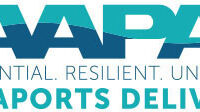Using Local Funding Creatively to Streamline the Federal Channel Improvement Process

In the Gulf Coast region, supply chain issues have been exacerbated by expanded manufacturing and servicerelated commodities. This includes not only heavy manufacturing such as new automotive plants, but also an increase in oil and gas imports and exports to take advantage of the tremendous refining capacity of the Gulf states.
Larger post-Panamax ships can offer some relief to congestion and increase to efficiency. And for several ports along the Gulf Coast, the solution has been channel deepening and widening projects.
These projects can bring incredible benefits to a port and a region. The standard federal process for channel improvement projects to get from concept to implementation can take decades to complete.
Congress has authorized several changes in the past decade that grant local port authorities more flexibility, speeding up the process. These changes include:
- Complete feasibility reports, based on section 203 amended in WRRDA (Water Resources Reform and Development Act) 2014.
- Build a project and turn it over to the U.S. Army Corps of Engineers (USACE) for assumption of maintenance, granted in section 204(f), also amended in WRRDA 2014.
- More flexibility about what qualifies for inkind credits for a federal match.
Several ports and navigation districts along the Gulf of Mexico have found creative ways to use this new flexibility and local matching funds to speed up the process — cutting project completion times by an average of two to five years, and in some cases as much as 10 years.
The economic benefits are significant. Consider that a widening project can open a channel to two-way traffic, relieving some of the current supply chain crunch. Considering just five feet of deepening can allow ships with 20% more product — meaning four vessels could hold the same amount of cargo that otherwise requires five, tremendously cutting transportation costs.
Participating ports and navigation districts can leverage local funding and creative collaboration with USACE to move their projects along, while following the Corps’ permitting and construction regulations. The Corps remains an important partner in the coordination, review and approval of all activities associated with the project. At the beginning of the process, USACE and the local sponsor enter into a series of agreements to codify their partnership. Below are a few examples of projects in the Gulf Coast that are taking advantage of the revised federal process to shorten the time from concept to completion, generating savings, increased cash flow and safer channels on an earlier time frame.
Port of Brownsville
The Brownsville Ship Channel is a 20-mile long, 42-foot-deep channel in south Texas. The channel location makes it ideal for trade with Mexico and south Texas. The almost 12,000 people working at the port and its industries make it one of the largest employers in the region.
The port is participating in a $275 million Corps pilot project to deepen the channel by 10 feet and widen to widths of 400 feet through an innovative public-private partnership (P3) delivery model, as part of the Revolutionize USACE Civil Works Program.
The private partner is actively planning a new LNG plant on the channel. To meet its operational requirements in a timely fashion, the company could not wait on the federal process for funding and construction. So the private partner agreed to pay the total costs of widening and deepening the channel from the Gulf up to the site of the plant channel section as a Phase 1 segment of the project. Phase 2 of the project will be executed by the Port of Brownsville and USACE. The use of private dollars reduces both the port’s and the federal government’s cost share.

Fulfilling the private portion of the project, the private funder will be dredging from offshore to its dock. The USACE and the navigation district are responsible for completing the project from the dock to the turning basin. The federal portion is being funded through the Infrastructure Investment and Jobs Act, with the remainder of the cost being paid by Brownsville Navigation District.
Because of the private funding, the project rose in priority for federal funding. The project will be completed four to six years earlier than it would have through the conventional funding process. USACE will assume maintenance responsibility.
Port Houston
Port Houston is in the process of selective widening and deepening of six segments along the Houston Ship Channel. This improvement will allow for deeper draft vessels to reach further into the channel and allow for safe ship passages and extended two-way traffic operating hours along the channel.
In January 2021, Port Houston was granted a “new start” designation and authorized federal funds to begin construction of the Houston Ship Channel Expansion — Project 11. This designation and funding allowed USACE and the port to execute a Project Partnership Agreement, which lets construction begin for the critical elements of the project.
Port Houston funded design starting in 2019, accelerating Project 11 and putting it on track for completion in less than half the time it would otherwise.
To facilitate this, the port did the following:
- Initiated and funded the feasibility report, taking about five years off the typical congressional funding process.
- Launched the design process before Congress approved the feasibility report. This was a risk; however, the port ensured the design met USACE criteria to mitigate that risk.
- Had plans and specifications for four of the six sections ready within 10 months of the congressional approval — a process that could have taken up to three years under the conventional process.
The cost of the design counted toward a portion of the port’s 25% local sponsor match. In addition, the port is executing construction on two of the sections, further reducing the overall timeline. In total, the port will see the economic benefits of the project five to seven years earlier than the typical federal process.

Sabine-Neches Navigation District
In another project progressed by the nonfederal sponsor’s funds, the Sabine-Neches Navigation District in southeast Texas has decided to deepen in phases — first phase taking the channel from 40 to 44 feet, then the second phase will deepen to full authorized depth of 48 feet. It will also increase the waterway length from 64 to 77 miles.
The Navigation District’s simulations determined that most benefits would be derived in the first four feet of deepening. This tiered approach allows the entire channel to realize those benefits in half the construction time — about three and a half years rather than seven. This phased approach will allow for efficiency and safety benefits to begin accruing earlier in the process while not affecting the overall cost of the project.
Two ports will benefit from the deepening, Port of Port Arthur and Port of Beaumont, as well as a variety of individual users toward the end of the project. Many of these individual users, as well as Port of Beaumont, are in the upper half of the channel.
Currently, lightering — offshore trade of cargo between vessels — is a common practice for the Sabine-Neches Waterway, it is both time-consuming and costly. Even at four feet deeper, the channel will provide increased efficiencies and reduced costs by allowing deeper draft vessels to enter the waterway.
By taking the lead on the design of the channel, the navigation district can set its priorities, which includes the first four feet, as well as the creation or improvement of three anchorage basins. The anchorage basins will increase efficiencies during periods of limited navigation on the waterway, particularly for nighttime movements.

Port Freeport
Port Freeport has taken a proactive approach to its channel development by designing, funding and constructing elements.
To speed the process and attain federal funding, Port Freeport paid for a sheet pile wall along an existing federal flood control project to ensure bank stability for channel widening and deepening. The $30 million project to build the wall allows the channel to be widened from 300 to 400 feet at a critical bend in the channel which will allow for safe passage of larger vessels. The construction of the new wall cleared the way for federal funding of the deepening and widening.

In addition to deepening and widening, the project includes the construction of a new turning notch. At 56 feet, it will be one of the deepest channels on the Gulf Coast, and one of the shortest at 11 miles long. The improved channel will provide additional access to existing and planned container terminals at Port Freeport, in addition to other facilities up the channel, including a Strategic Petroleum Reserve location.
Additionally, the port coordinated closely with USACE and the Environmental Protection Agency to find a more sustainable and cost-effective solution for dredged materials: depositing the majority in an ocean-dredged materials disposal site in the Gulf. This saves the project about $25 million.
Local Sponsor Benefits from Prioritizing
Navigation channels are one of the most important economic engines for the United States and its ability to trade with international partners. Recent events have shown that delays in this portion of the supply chain can have effects on overall delivery and price of everyday products. Although effective and thorough, the Corps of Engineers’ process of planning, engineering and construction relies on unknown funding schedules and congressional authorizations, which extends the schedule of a project. With local sponsors’ participation, some of these funding constraints can be overcome.
The Gulf Coast ports mentioned above, of varying size and capacities, have found methods to compress schedules, reduce cost and expedite economic benefits for their region by utilizing readily available tools and procedures to work with the Corps to implement projects more efficiently.
Recent and ongoing channel improvement projects in the Gulf Coast show how others can take more of the planning, design and funding to speed construction and the accruing benefits. There is a considerable experience base to provide these services within the consulting and dredging community to help provide port directors with project delivery alternatives.
Depending on available funding and time schedules, a port can:
- Plan a Section 204(f) project: The nonfederal sponsor builds the project, and the Corps assumes maintenance after completion. This is a good option for ports where market conditions are pushing for a faster build. The key is to have a team that is familiar with Corps standards, which must be used. The project must also be economically justified, per Corps requirements.
- Partner with private industry: The most dramatic example is the P3, but this can also include working with manufacturing or dredging contractors or finding innovative procurement solutions.
- Conduct the feasibility study: Local sponsors who have the feasibility study ready can enter pre-construction engineering and design as soon as the project is authorized — shaving up to a year off the project time frame.
- Sponsor design: For a relatively low cost, this can cut overall completion time from the project. Typically, the design cannot be initiated after the project is authorized by Congress and funding for design received. Authorization and funding can take two years, prior to the initiation of design. In addition, the Corps must start design with the first usable increment. Local sponsor-initiated design can approach multiple contracts simultaneously shortening the overall design phase by two years or more.
- Complete a portion of the construction: The local sponsor can issue construction contracts that will be a portion of their work in-kind required by the federal partnership.




